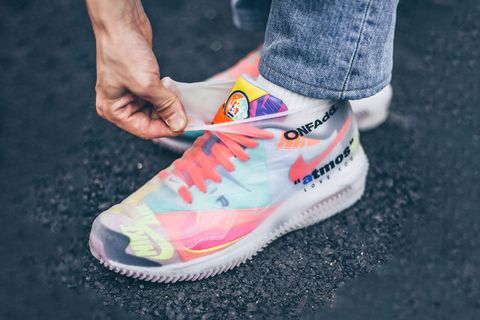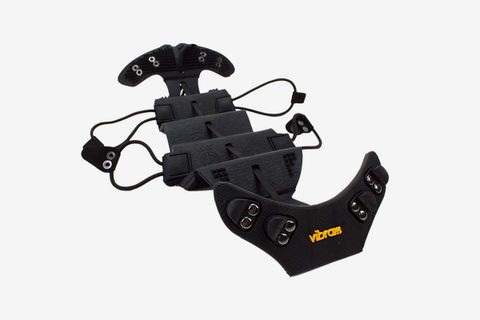Hyper-Functional Sneakers Are More Than Just a Trend
With utilitarianism at the center of our zeitgeist, the worlds of style and practicality have never been more intertwined and, as of late, it seems like the “shoe protector” – or “overshoe” – is everywhere. Often referred to as “gorpcore,” a movement suggesting that nothing is more stylish than functionality, the overshoe is yet another sign that consumers are no longer willing to sacrifice form over function.
The first overshoe can be traced back to Leon Leonwood Bean, who created a boot with waterproof leather uppers and rugged rubber bottoms in 1911. He subsequently launched his eponymous heritage label L.L. Bean, with the Bean Boot as a cornerstone of the label’s offerings.
Today, there are two general categories of overshoes that dominate the marketplace. The first is a thinner, flexible rubber slipper designed for hard-bottom shoes that protects against wet weather, often referred to as galoshes. The second (and more contemporary) is a chunky overshoe constructed from durable nylon, with a heavy sole and instep.
Looking to the thinner, slipper-like overshoes, two key players come to mind. SWIMS offers a modern take on a sartorial classic – an outer layer protects against the weather, while an inner layer of flocking buffs and shines the shoe in the process. The galosh also allows the wearer to colorblock their hardbottoms. Similarly, Nike’s ACG line offers thin, galosh-like overshoes for cyclists. Considering that the earliest version of the galosh was designed for rigid landscapes and freezing climates, Nike’s decision to incorporate the silhouette into its All Conditions Gear line makes perfect sense.
A rudimentary version of the overshoe was eventually introduced to sneaker culture when sneakerheads explored desperate means of keeping their shoes clean. Once ridiculed for wrapping their kicks in plastic bags during unexpected rainfall, the collectors’ opinion-splitting behavior resulted in atmos and Firebox developing silicon “shoe condoms” – a (slightly more) aesthetic solution.
During Paris Fashion Week in 2018, Chinese label SANKUANZ unveiled its unique take on the classic crampon. This was one of the first stand-alone versions released for aesthetic purposes, featuring a wide front tongue panel compromised of neoprene and leather uppers with velcro leather straps. It split opinions, in part because of its high retail price.
Nike took things to another level. In 2018, the brand teamed up with Tom Sachs for the third iteration of their Mars Yard sneaker – this time, an experimental overshoe. Through daily use, Sachs found that the original design didn’t meet his expectations, and the Mars Yard Overshoe was born. Also referred to as the “March Yard” (a nod to the rainiest month of the year), the sneaker features several attributes that help it adapt to its environment. This includes a nylon upper reinforced with Dyneema (a strong fiber used in boat ropes and sails) as well as the ability to adjust the height of the ankle collar.
The Nike x Matthew Williams TR 3 SP, released this past summer, is a form-fitting sneaker that sits atop a Nike Free 3 sole, accompanied by a plastic mold – perfect for traversing demanding environments. The crampon sole, despite being perfectly fitted, exists as a separate entity.
ALYX, Williams’ own label, is no stranger to the removable sole. Whether it be a pair of lace-up derbies or some low-top hiking boots outfitted with Vibram’s IceTrek anti-slip outsole, ALYX has brought Vibram’s catalogue of functional soles to the mainstream. Recently, the Nike x Matthew Williams TR 3 SP inspired an entirely new trend, with sneakerheads swapping out their favorite sneakers cradled in the removable sole and posting the resulting shoe combination on Instagram.
If plastic bags and shoe condoms were the first realization of this amusing fad, then the crampon sole re-imagines this notion entirely. Gone are the days of sacrificing utility for aesthetic appeal. Considering our progressive desire for utilitarian design, it should come as no surprise that crampons are set to dominate the sneaker market in near future. The overshoe is here to stay.







